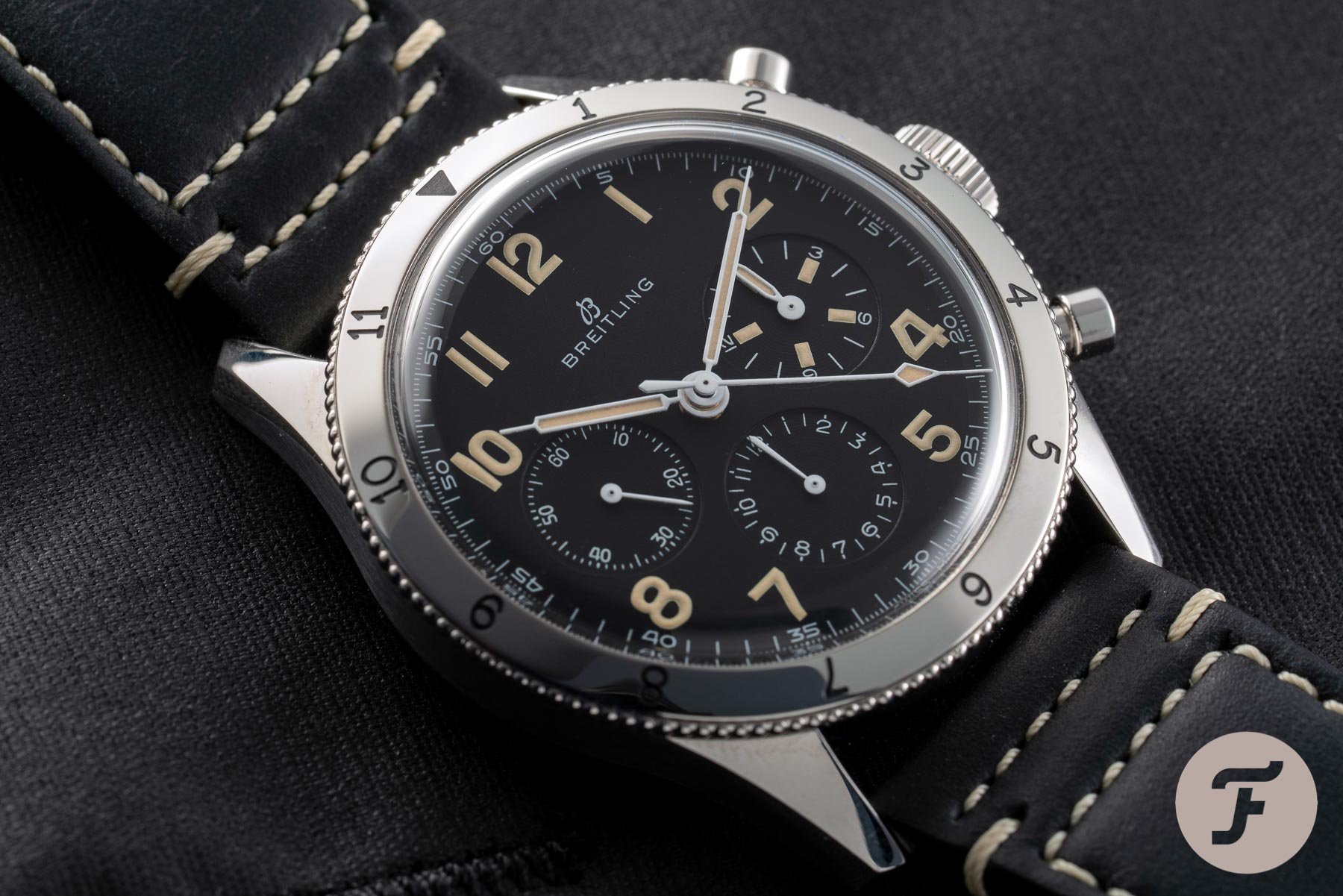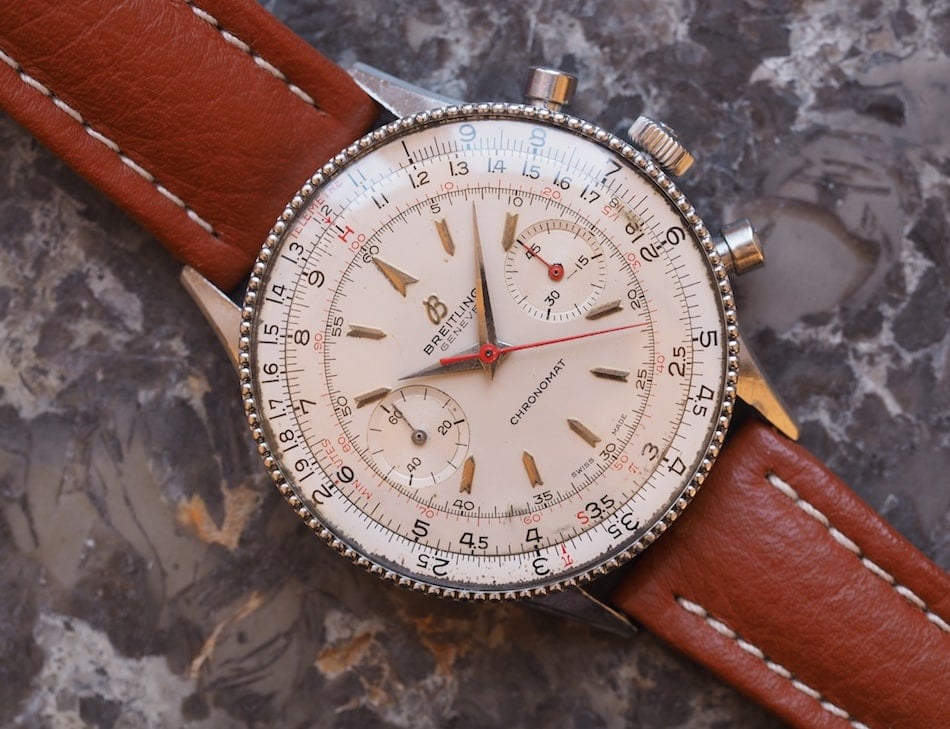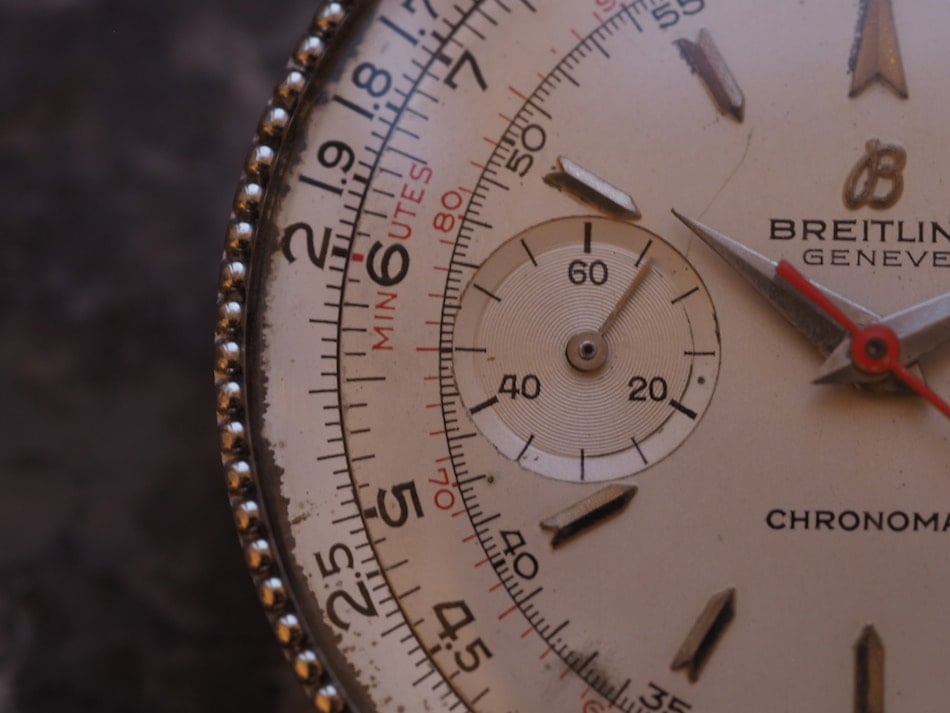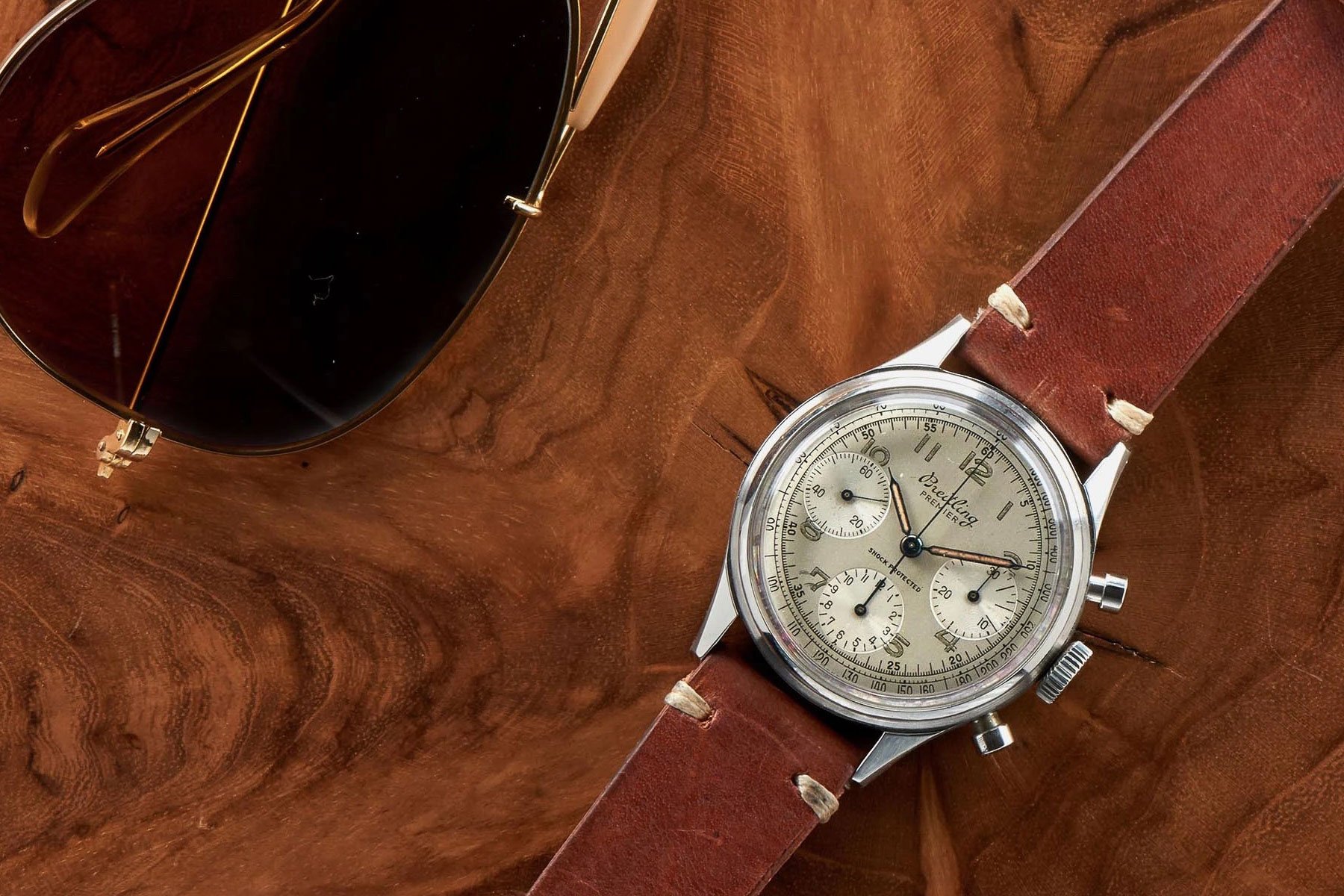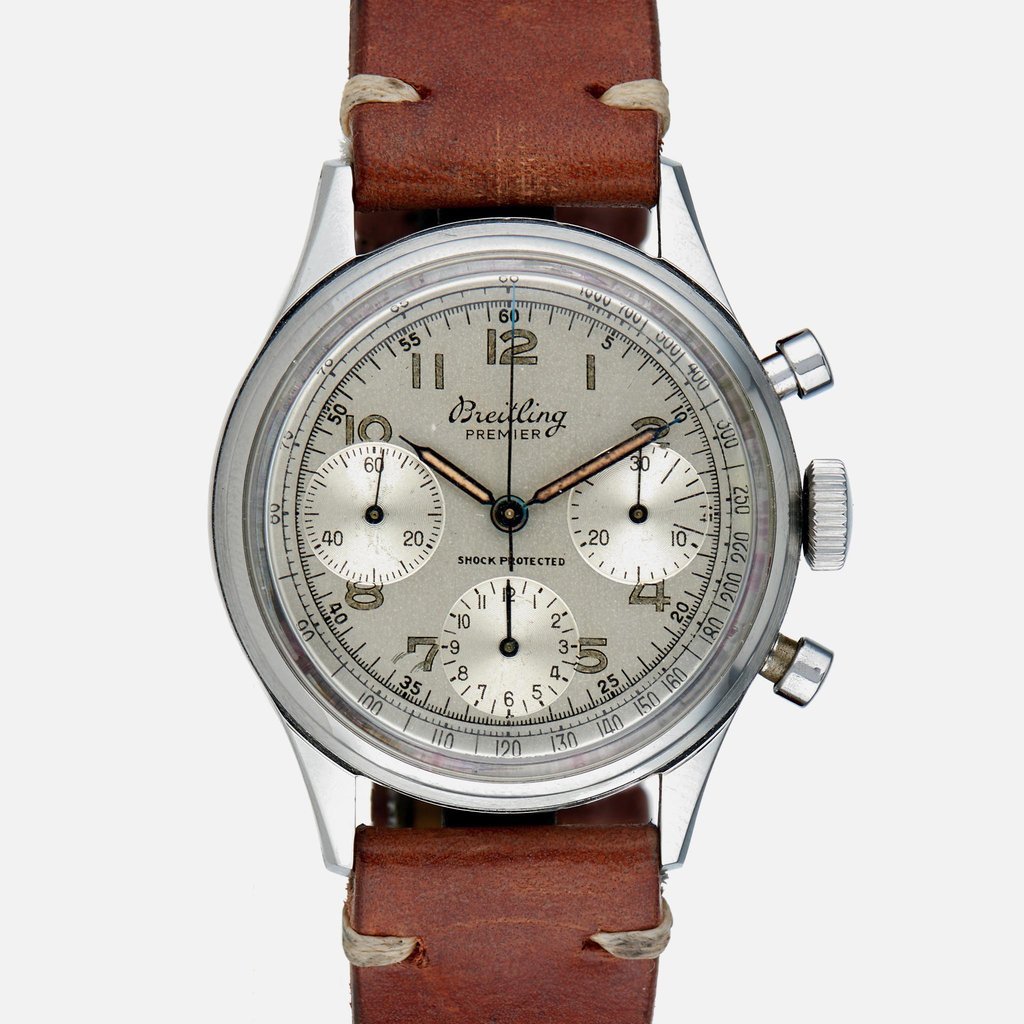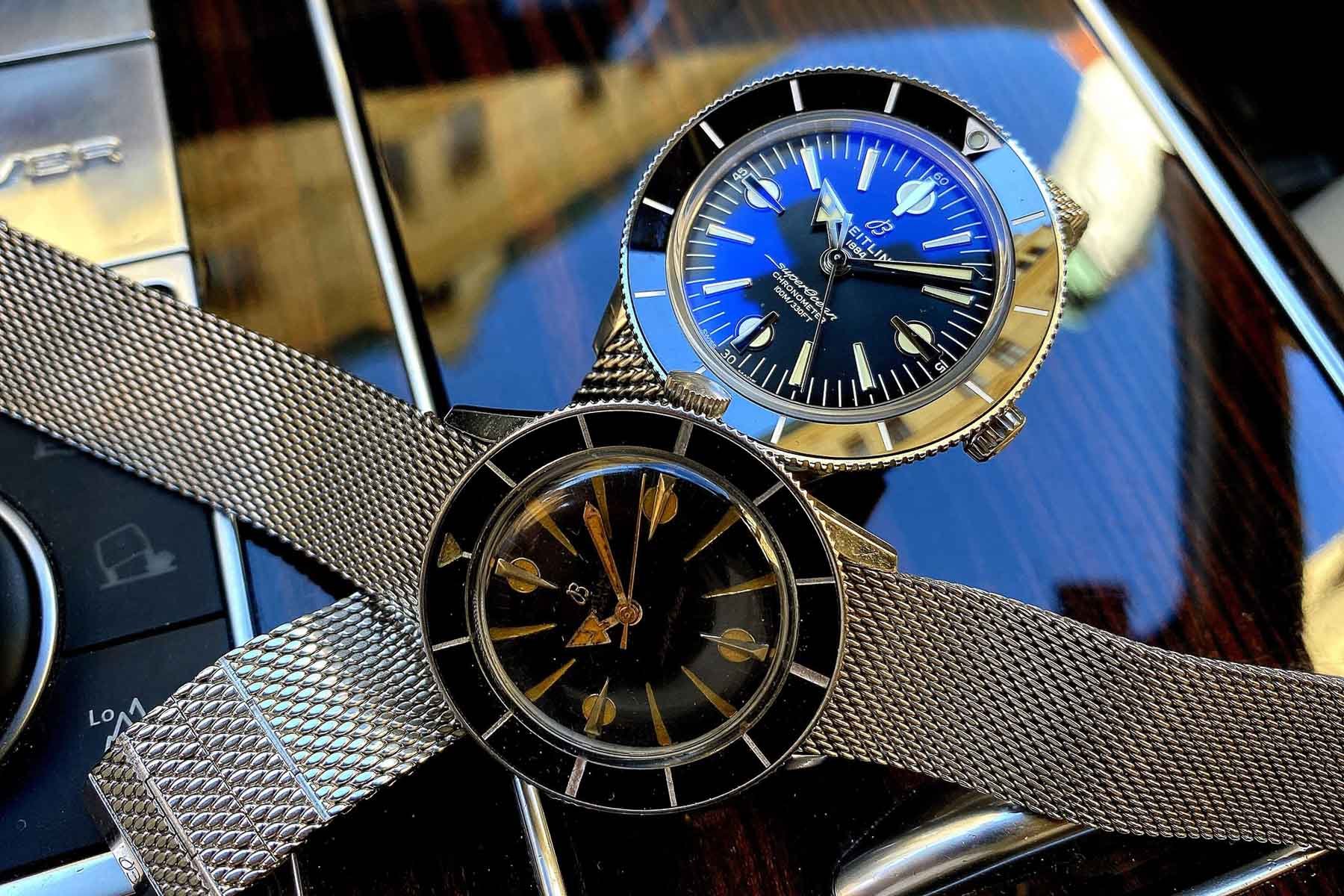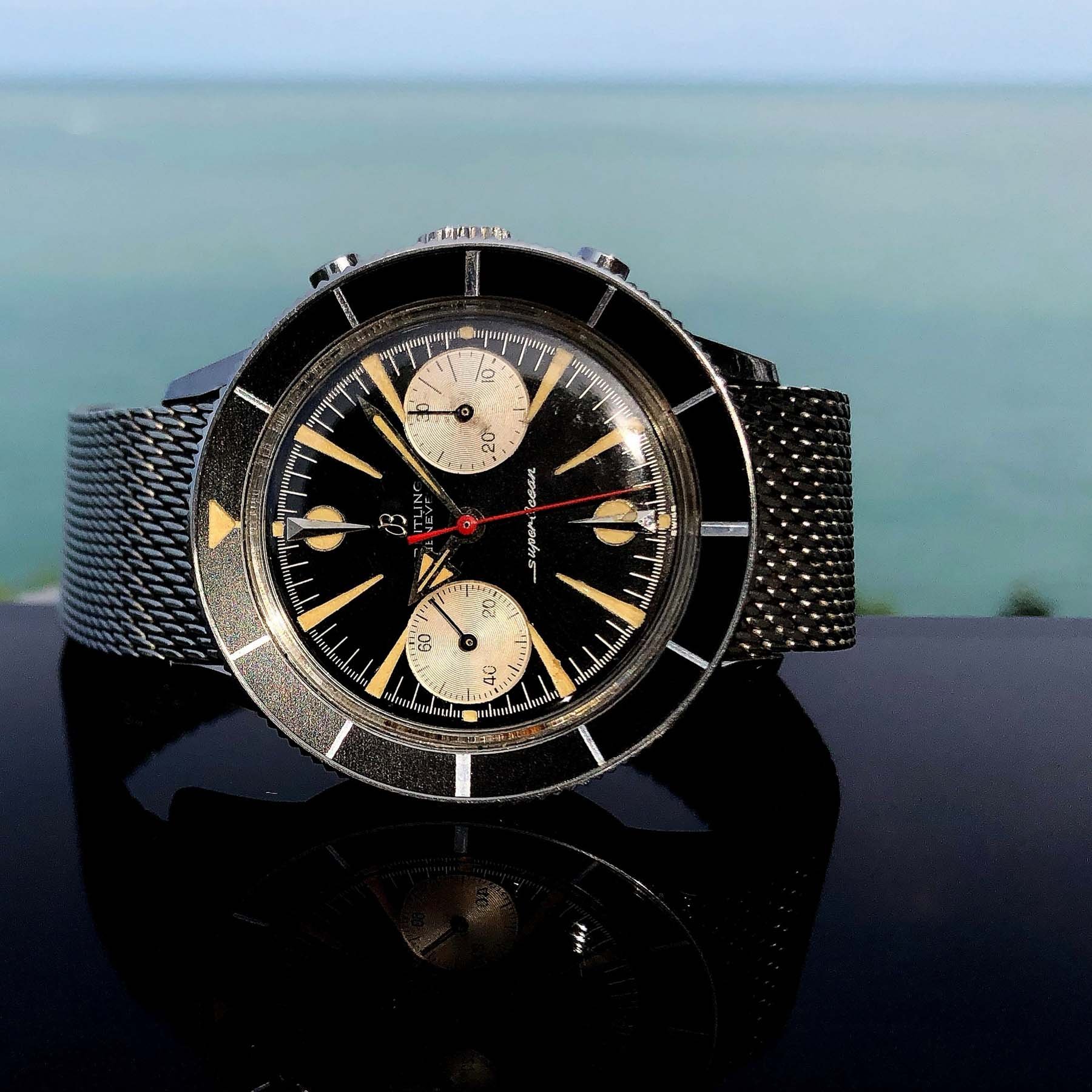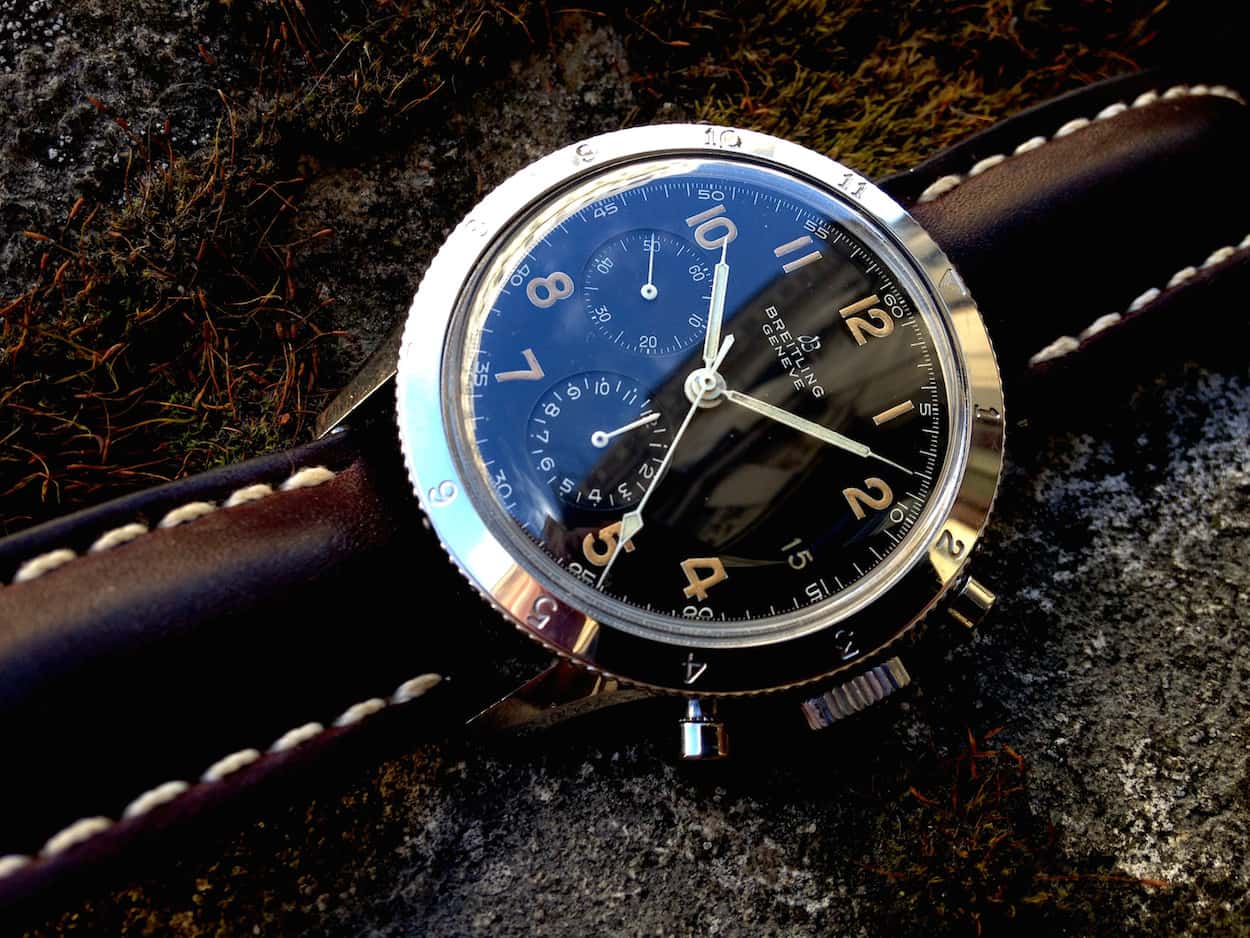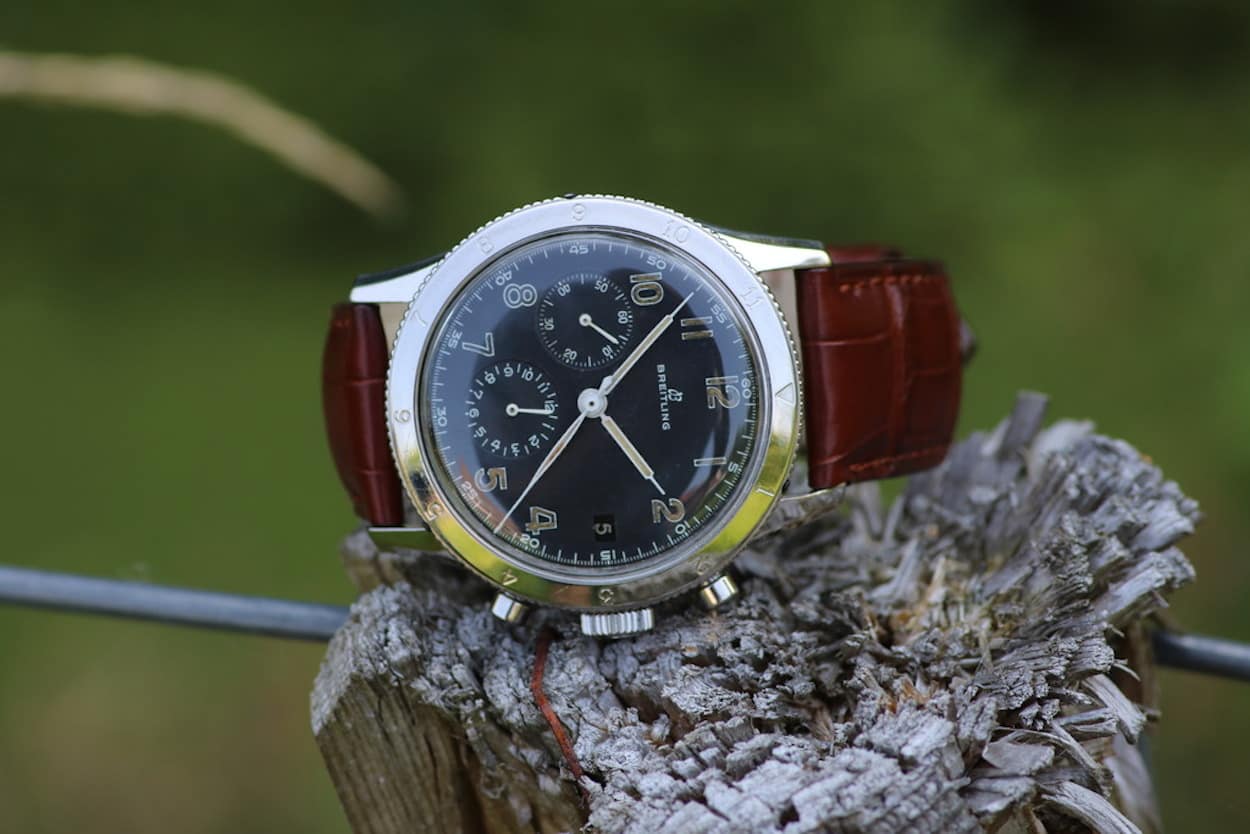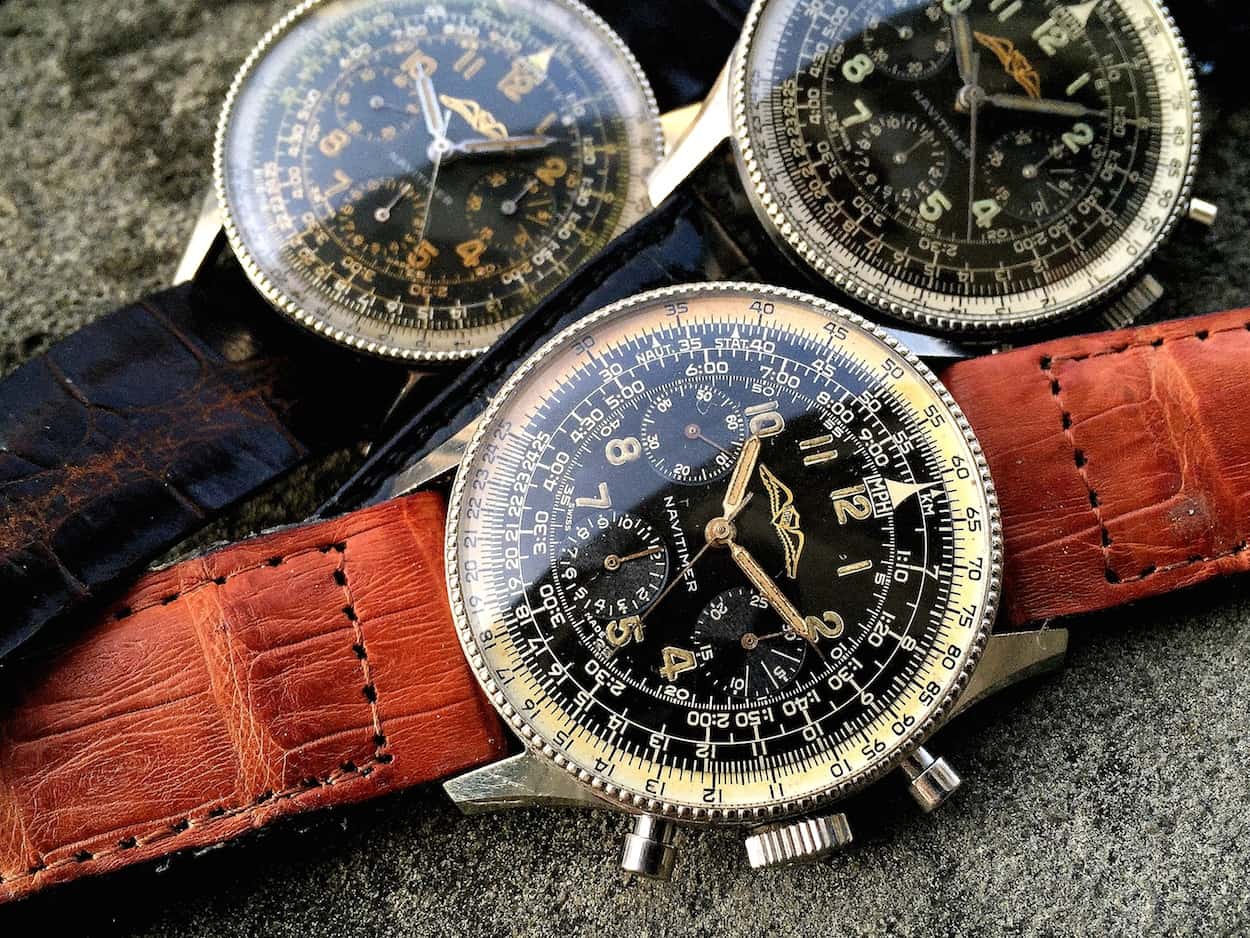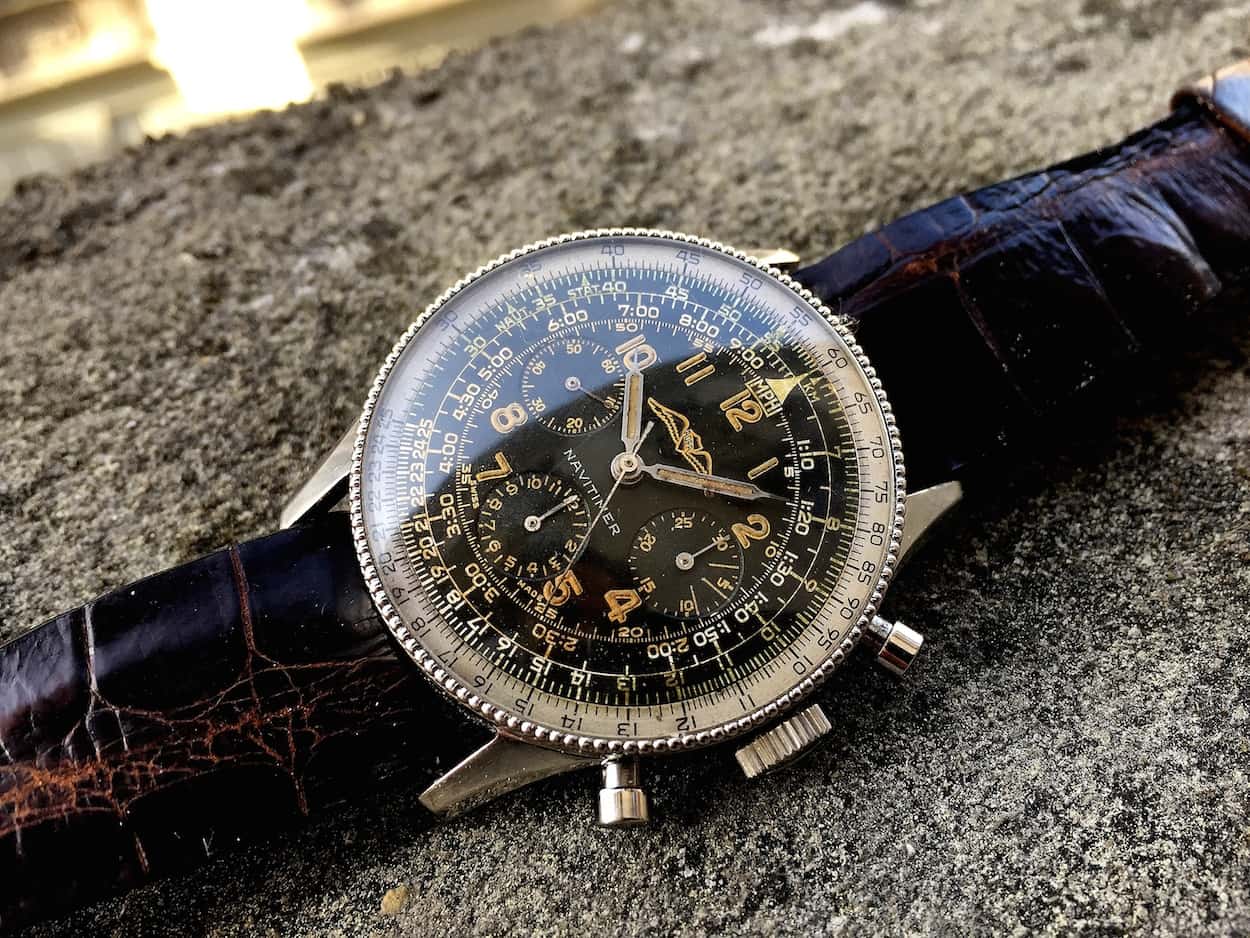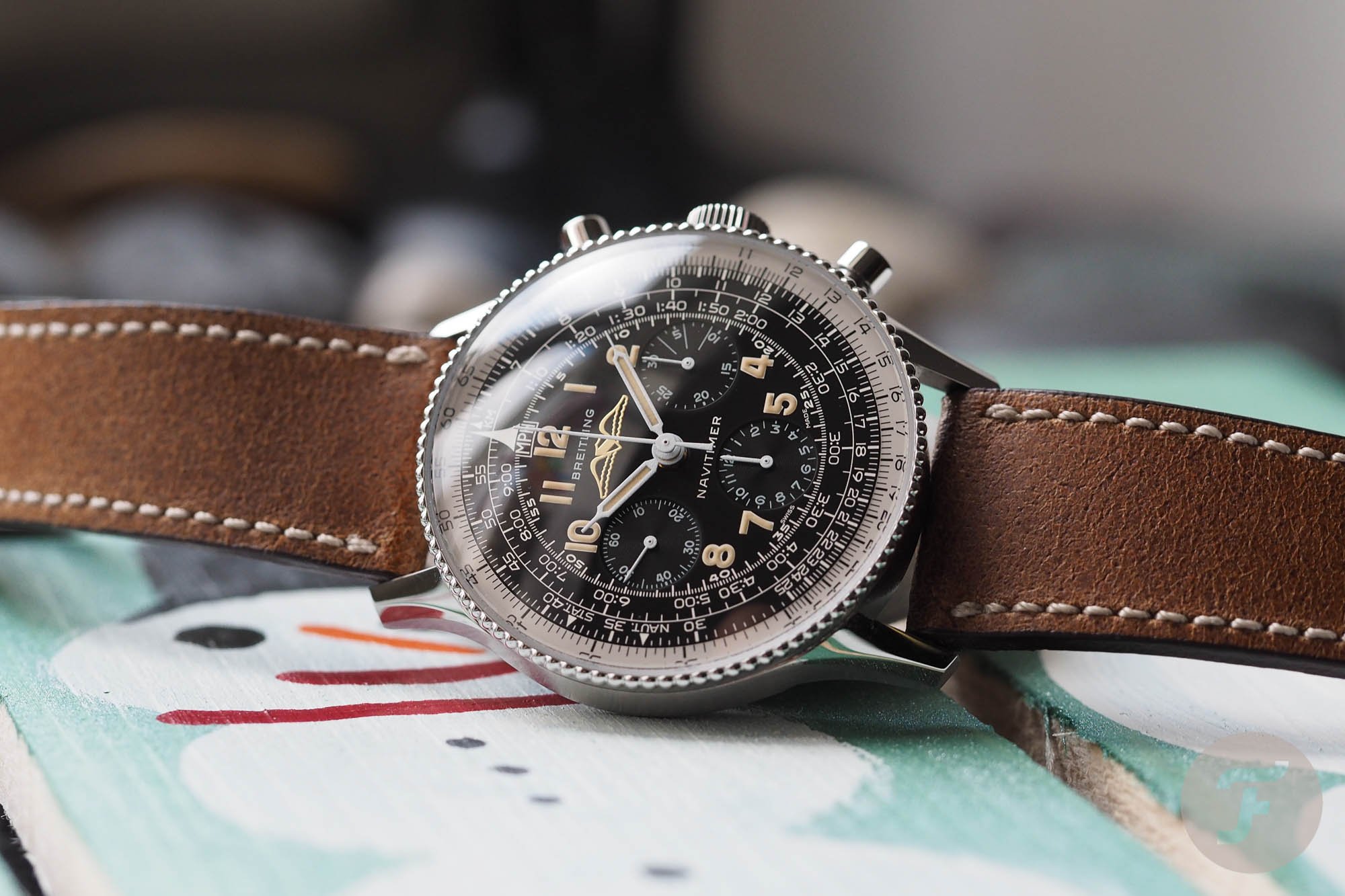Buying Guide: The Best Breitling Watches From The 1950s
We like to talk about vintage watches a lot within the Fratello team. While the daily routine is largely focused on the most recent developments in the world of watches, the most fun for many of us lies in the world of yesteryear. It’s a world full of history, remarkable watches, incredible stories, and quirky details. It inspired us to come up with a series of articles focusing on the best watches per decade from a select group of brands. Some of them priceless; some of them still affordable. But all of them are remarkable watches. In this third installment, we will take a look at the best Breitling watches from the 1950s.
The best Breitling watches from the 1950s? What does that actually mean? Every week we try to come up with a small selection of special watches for several reasons. Maybe they are the icons, maybe they are the affordable options, maybe they are technically brilliant, or maybe they look amazing. It can be anything really as long as they stand out. We’ll try and mix up things as much as possible. And I will define an entry-point watch, my preferred choice, and we’ll close out with the icons where money is no object.
The great importance of Breitling in the fifties
Breitling was one of the most prolific watch brands in the 1950s. But I have to be honest here, while we decided to start this series in the 1950s, Breitling released some of its most iconic models starting in the 1940s. Mike wrote a great article about vintage Breitling in conversation with two vintage Breitling experts @watchfred and @rene_jk. When you read it, you’ll quickly find out that the brand has shaped the way we look at watch design today heavily. And it started doing so in the 1940s with the Premier and the Chronomat. Especially when it comes to chronographs, Breitling is the brand that shaped what they look like today.
The recent Breitling re-issues are historically spot-on.
And over these last couple of years, Breitling has been picking up on that by releasing some great vintage re-issues. It has to be said that Breitling CEO Georges Kern and his team have been working with Fred Mandelbaum (watchfred) to make sure the re-issues are historically spot-on. It’s why they are praised by both vintage collectors and the wider watch buying audience. And you have to give the brand great credit for that. It has created a renewed relevance for the brand and its incredible history. And it won’t come as a surprise that you will find some of these icons in our list of five remarkable Breitling watches from the 1950s.
The entry-point — Breitling Chronomat ref. 808
The entry-point of fifties Breitling watches is not cheap. Well, not as affordable as last week’s Omega. With the growing popularity of vintage watch collecting, Breitling timepieces from the 1950s have become increasingly hard to find, and the prices have gone up drastically. But despite the price increases, the Breitling Chronomat ref. 808 is still a watch you can find, and you don’t have to sell a kidney to get one. However, you might not be able to buy one for $1,400 like Mike did in 2015 — as he explained in his article about the Chronomat ref. 808.
The Chronomat sparked the design of the iconic Navitimer.
Mike also perfectly explained that the Chronomat is one of those watches that has its roots in the 1940s. The Chronomat has seen various designs over the decades. It is still part of the Breitling collection today. I love the current Chronomat, but the initial generations of the watch looked completely different. The early Chronomat is the watch that sparked the functionalities and design of the iconic Navitimer. The Chronomat was first released in late 1941, early 1942. The main functional feature of the watch was patented by Breiting in 1941: the famous slide rule. After more than 15 years of production and a great variety of dial executions, Breitling replaced the first-generation Chronomat ref. 769 in the late 1950s with the Chronomat ref. 808.
Not made for navigation
For the Chronomat ref. 808 Breitling updated the design. The biggest update was going from rectangular pushers to round pump pushers. On top of that, Breitling changed the hands from needles to baton hands, increased the crown, and updated the hour markers from Arabic numerals to applied baton hour markers. What didn’t change was the movement. Both the ref. 769 and the ref. 808 were powered by the hand-wound Venus 175 movement. It’s a well-respected column wheel movement that’s a 2-register version of the Breitling-standard Venus 178. Unlike the Navitimer that came over a decade after the Chronomat, the Chronomat wasn’t created for navigational purposes. As Mike explained, “the Chronomat was made for engineers, mathematicians, and those who made it their task to solve problems.”
You will find steel, steel & gold-plated, and full gold versions.
With a neatly sized 36mm case, its iconic slide rule, and its still-recognizable looks, the Chronomat ref. 808 stayed in production until the late 1960s when a very different-looking automatic Chronomat replaced it. But the first two generations of the Chronomat will forever show where the Navitimer got its inspiration from. If you search for a Chronomat ref. 808, you will find steel, steel and gold-plated, and full gold versions. On top of that, there are several dial executions. Depending on your choice of materials and the condition of the watch, expect to pay anywhere from 2k–6k for this legendary Breitling. That’s a lot more affordable than the early model Navtimers. The Chronomat is a perfect entry into 1950s Breitling glory given its looks and historical significance.
My preferred choice — Breitling Premier ref. 788
Another Breitling model line with its roots firmly planted in the 1940s is the Breitling Premier. The Premier watches are the perfect statement of class and elegance combined with the functional properties of a chronograph. If you ask me for my favorite classic chronograph design, the Breitling Premiers from the 1940s and 50s take the top spot. And I understand that Breitling decided to add a modern version of the Premier. It’s a step away from the highly functional watches the brand has become known for while still carrying that typical Breitling DNA.
Multiple references were produced at the same time.
There are multiple references of the Breitling Premier that were produced at the same time. Something that was usual for many brands, as you are probably aware. The differences can be found in case size, movements, and also dial designs. Breitling produced two references with three sub-registers that are absolute stunners and are also much-loved amongst Breitling collectors. The first is the Premier ref. 765, and the second is the Premier ref. 788. And both not only look stunning but are also very much up-to-date with their 36mm and 38mm case sizes.
No classier statement
The Breitling Premier ref. 765 is very popular among collectors because it features the legendary Venus 178 movement that Breitling also used for its early-generation Navitimers. Because of that iconic movement, Breitling used a 38mm case for ref. 765, making it a huge watch for the 1950s but the perfect size for many enthusiasts nowadays. The smaller Venus 152 movement powered the ref. 788, and it’s why the watch is a tad smaller at 36mm. Having said that, my absolute favorite Breitling Premier from the 1950s is a later 38mm Premier ref. 788 in 18KT in rose gold. Seeing the watch with a rose gold case gives it an incredible boost in class and elegance. There is truly no classier statement from the 1950s for me than that particular watch.
You will be wearing an incredible classy statement from the 1950s..
Prices for a vintage Breitling Premier ref. 788 start at roughly 3K and move up quickly to double that for pieces in better condition. The rose gold version starts around 6K. You should definitely expect to pay more for a piece in good condition. You have to keep in mind that many of these watches could feature unoriginal parts, which is not necessarily strange after 70 years. But replacing parts does meddle with the original state of a watch. It’s why the prices differ greatly and why you have to do your homework with the Breitling Premies watches. But once you have found one in good condition, you will be wearing an incredible, classy statement from the 1950s.
Money is no object #1 — Breitling Superocean
One of the most talked-about re-issues of 2020 was, without a doubt, the Breitling Superocean Heritage ’57. The main reason is that the design is true to the original Superocean design, making it the perfect nod to the original. The original Breitling Superocean ref. 1004 was released in 1957 and was something different from the usual chronographs the brand was known for releasing. Despite looking completely different from the watches Breitling released at that time, it did fit the fifties’ zeitgeist, with brands looking for their own diver to cater to the increasing number of amateur and professional divers. The Superocean design does fit that overall spirit of the Rolex Submariner, Blancpain Fifty Fathoms, JLC Deep Sea Alarm, and the Omega Seamaster 300.
The biggest eye-catcher of the watch is the black concave bezel.
But look a little closer, and you will find out that Breitling gave its own unique spin to the design of the 38.5mm sized Superocean. Without a doubt, the biggest eye-catcher of the watch is the black concave bezel that was meant to protect the large domed crystal. A striking element is the unique dial design. The black dial features uniquely designed round luminous markers underneath applied dagger indexes at 3, 6, 9, and 12 o’clock. And zooming in closer, you will see the unique “Christmas tree” design of the hour hand. And another great feature is the brilliant strap-like mesh bracelet the watch came on. So despite being part of a group pioneering divers’ watches from the 1950s, Breitling definitely created its own take on it that stood out because of its design and the elegant profile that made it a joy to wear.
Rare and expensive
Inside the stainless steel case, you will find the self-winding ETA2365 movement, which is marked B125. It’s a break from the hand-wound chronograph movements we are used to seeing from Breitling in the 1950s. Having said that, Breitling also released a chronograph version of the Superocean with reference 807. This Superocean Chronograph featured the Venus 150 movement, which is a hand-
Expect to pay a serious chunk of change.
Both the ref. 1004 and ref. 807 were produced for only a couple of years, and that is why you don’t see them for sale often. And when you do, expect to pay a serious chunk of change. And the re-issue of this classic has only made the originals more sought-after. Expect to pay multiple tens of thousands for a vintage Superocean, depending on the condition. But as most owners know how rare and special these watches are, expect them to pop up at watch auctions fetching anywhere from 25k and up. It wasn’t a bad idea from Breitling to come out with a new version of the Superocean because it’s probably the only way for most of us to enjoy the unique design.
Money is no object #2 — Breitling AVI ref. 765
The Breitling ref. 765 has a story that dates all the way back to the 1930s. It’s when this reference first showed up in Breitling’s history. As you can read in Mike’s interview with the Breitling vintage experts, Fred Mandelbaum explains, “In 1939 Willy Breitling established a Military Aviation division, producing aircraft instruments for the Allied Forces (personally breaking the embargo to keep up supplies, the story goes) and some exceptional wrist chronographs. The Premier 734 & 765 are examples and, again, are among my favorites.”
For that time the AVI ref. 765 was a huge watch.
But the AVI ref. 765 that was introduced in 1953, was a pretty different watch compared to the pre-war model. As it was a pilot’s chronograph, the watch was substantial in size at 41mm. For that time, it was a huge watch compared to many of the other available watches, but its military purpose perfectly explains its size. As a result, the original AVI ref. 765 is still perfectly sized in today’s day and age. The AVI was a chronograph that featured a 12-hour steel bezel and a black dial with subregisters at 6 and 9 o’clock. At the 3 o’clock position, the watch has a special aperture window with a 15-minute disk. The story goes that this special “digital” numeric 15-minute counter was intended for pilots to keep track of the 15 minutes needed for warming up the plane’s engine and doing the necessary technical checks before taking off.
A unique 15-minute counter
Breitling once again used the legendary Venus 178 movement, but it was heavily modified to make sure the watch could have the 15-minute counter. There are versions of the AVI ref. 765 that feature a “normal” 15-minute subregister with a hand which was still an unusual feature compared to the usual 30-minute counter placed at the 3 o’clock position. The AVI ref. 765 was produced until the early 1960s when it was replaced by different versions of the AVI ref. 765 known to Breitling collectors as the “Raquel Welch” and the “Jean Claude Killy.” But we will get to those when we are discussing the best Breitling watches from the 1960s.
Only 125 of the Breitling AVI ref. 765 watches were produced annually.
Finding a vintage Breitling AVI ref. 765 is tough. The rumor is that only 125 of these watches were produced annually, giving you a good indication of how rare they are. So expect to see prices starting at roughly 12.5K and moving up to double that easily for a piece in great condition. Another less expensive option would be to buy the 2020 re-edition of the 1953 original AVI ref. 765. Breitling introduced this watch last year to much critical acclaim. Once again, the re-edition is very close to the original from the 1950s, and we have to praise Breitling for that. Creating these pieces as faithful as they have — with the aforementioned outside help — is a great way for enthusiasts to enjoy the glorious Breitling watches from the 1950s because the prices for a vintage piece have made it less possible to do so.
Money is no object #3 — Breitling Navitimer ref. 806
Writing just four paragraphs about the legendary Breitling Navitimer is never going to be enough to tell you all about the special history of the most iconic Breitling ever made. The reason to mention this is that a deep dive into the world of the Navitimer is like reading a historical novel that spans all the way from 1954 to now. So I definitely urge you to read all about the Navitimer. It is a story full of unique historical details about the different executions of the watches, the military organizations that used them, the production details, and so much more. But let’s start at the beginning and give a short recap of the history of one of the watch industry’s biggest icons.
The Navitimer wasn’t the first Breitling with a slide rule as the Chronomat took that crown.
Breitling introduced the Navitimer ref. 806 as a luxury aviator’s watch in 1954. Its unique looks were triggered by its functionalities that included a slide rule and a three-register chronograph. As mentioned before, the Navitimer wasn’t the first Breitling with a slide rule as the Chronomat took that crown at its introduction in the early 1940s. When the Navitimer debuted, it was huge with its 40mm size. But just like the AVI Ref. 765, it serves a functional purpose in aviation. Hence, it only makes sense that legibility and functionality were key and explaining why these watches were bigger than their contemporaries. And they also look big due to the slim bezels and flattish acrylic crystal. Underneath the early Navitimers featured “all black” dials and boasted “beaded” bezels.
The grail does come at a cost
The really early Navitimers were powered by the legendary Valjoux 72 movement and are very rare. Breitling eventually switched to the legendary Venus 178 movement that we mentioned several times before. Breitling used the Venus 178 movement for the Navitimers up until 1974. This is interesting as the Venus 178 ceased production in 1966. Imagine the number of movements Breitling had to have stockpiled for the production of the Navitimer for eight years. The Navitimer was available in stainless steel, gold-plated, and full-gold versions. Many of the older Navitmers come with the Aircraft Owners and Pilots Association (AOPA) wings logo as they were offered to members. But next to that, there are several executions of the dial that are worth a study on their own.
There is the option of buying the beautiful Navitimer 806 1959 Re-edition.
As you would expect, these early Navitimers ref. 806 are increasingly hard to find as they have become much-wanted collector’s items. So finding a 1950s Navitimers is a task that requires patience, knowledge of the history of the Navitimer, finding the right ways that could lead you to one, and some seriously deep pockets. If you want a ref. 806 with the Valjoux 72 movement, your best bet are auctions. And the prices start at 25K easily and going up quickly depending on the condition.
A vintage Navitimer ref. 806 with the Venus 178 movement from the 1950s is also a tough find but a relatively easy walk in the park compared to the Valjoux 72 models. Prices start at roughly 10K and move up quickly for a piece in good condition. If your budget doesn’t stretch that far, there is also the option of buying the beautiful Navitimer 806 1959 Re-edition. It shows that the Navitimer has not lost one bit of its iconic power.
Final Thoughts
In this series of articles, I cannot stress enough that you need to do your research if you are looking to buy a vintage watch. On top of being crucial in not getting disappointed with your purchase, it is also a lot of fun. Doing research and finding out about the watches you love is often the first connection you will make to a specific watch.
When it comes to Breitling, it is absolutely crucial that you get familiar with the history of the different models. You will find a lot of different executions of the same watch. The most common differences are dial executions and different logos that are used. Next to that, you have to keep in mind that many of the vintage pieces were serviced over the decades, and parts have been replaced. And lastly, you have to be aware of many fake and Franken pieces out there.
Get to know some amazing people along the way.
A lot of this crucial historical info has been well documented by collectors and available to read. Breitling The Book by Hervé Genoud is a great source of information, as is Benno Richter’s Breitling The History of a Great Brand of Watches 1884 to the Present. On top of that, contacting vintage experts will help out greatly. It’s a great way to learn more about a watch and get to know some amazing people along the way. You will find a lot of info on breitlingsource.com, and you can visit the Timezone forum for Breitling here. On both, you will find a great number of Breitling collectors that can help you out. Another great resource on the history of the Navitimer is a Watchuseek forum thread that can be found here.
Next week we will slowly move into the 1960s. An era the changed watches forever. In the meantime, let us know in the comment section what your favorite Breitling from the 1950s is.

